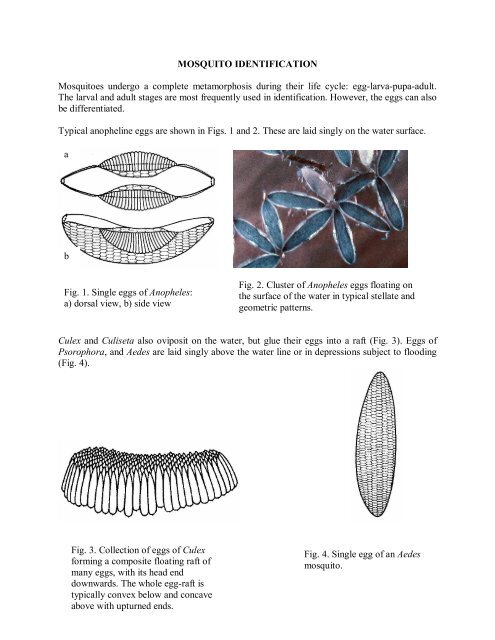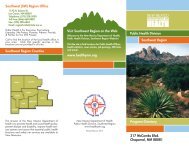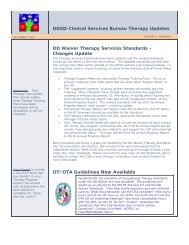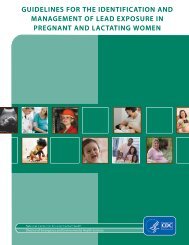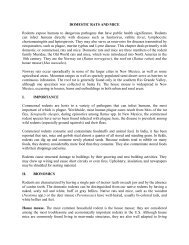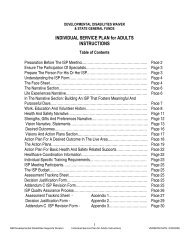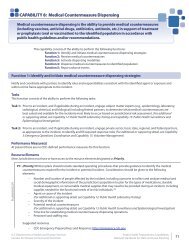Mosquito identification - New Mexico Department of Health
Mosquito identification - New Mexico Department of Health
Mosquito identification - New Mexico Department of Health
You also want an ePaper? Increase the reach of your titles
YUMPU automatically turns print PDFs into web optimized ePapers that Google loves.
MOSQUITO IDENTIFICATION<strong>Mosquito</strong>es undergo a complete metamorphosis during their life cycle: egglarvapupaadult.The larval and adult stages are most frequently used in <strong>identification</strong>. However, the eggs can alsobe differentiated.Typical anopheline eggs are shown in Figs. 1 and 2. These are laid singly on the water surface.abFig. 1. Single eggs <strong>of</strong> Anopheles:a) dorsal view, b) side viewFig. 2. Cluster <strong>of</strong> Anopheles eggs floating onthe surface <strong>of</strong> the water in typical stellate andgeometric patterns.Culex and Culiseta also oviposit on the water, but glue their eggs into a raft (Fig. 3). Eggs <strong>of</strong>Psorophora, and Aedes are laid singly above the water line or in depressions subject to flooding(Fig. 4).Fig. 3. Collection <strong>of</strong> eggs <strong>of</strong> Culexforming a composite floating raft <strong>of</strong>many eggs, with its head enddownwards. The whole eggraft istypically convex below and concaveabove with upturned ends.Fig. 4. Single egg <strong>of</strong> an Aedesmosquito.


